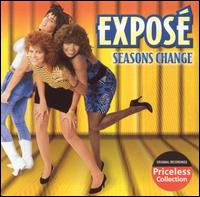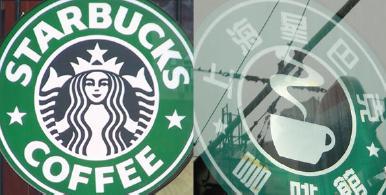Court Grants Reconsideration of Dilution Dismissal Based on Jada Toys v. Mattel

In Phase Forward Inc. v. Adams, plaintiff brought suit in 2005 against defendant Mary Noel Adams stemming from defendant’s use of the trademark PHASE FORWARD.
After the Trademark Dilution Revision Act was enacted in October 2006, defendant moved for summary judgment on the ground that plaintiff’s mark did not meet the amended definition of a “famous mark” as one “widely recognized by the general consuming public of the United States as a designation of source of the goods or services of the mark’s owner.” In filing its dilution claim, plaintiff had relied on the Ninth Circuit’s previous recognition of niche-market fame as a valid form of dilution.
At the time of defedant’s motion, the Ninth Circuit had not addressed the issue of whether the TDRA would be applied retroactively, though the Second Circuit in Starbucks Corp. v. Wolfe’s Borough Coffee, Inc., 477 F.3d 765, 766 (2d Cir. 2007) (STL post here), had applied the TDRA retroactively. Based on that decision, plaintiff voluntarily withdrew its dilution claim.
Nine days after the court issued its order dismissing the claim, the Ninth Circuit decided Jada Toys v. Mattel, Inc., 496 F.3d 974 (9th Cir. 2007) (STL post here), in which the court reversed the district court’s grant of summary judgment on Mattel’s counterclaim for federal trademark dilution. The Ninth Circuit noted that because the action was filed before the 2006 amendment, the pre-TDRA version of 15 U.S.C. § 1125(c) applied to Mattel’s dilution claim. Similarly, plaintiff’s claim for federal trademark dilution under Section 1125(c) was filed before the enactment of the TDRA. Therefore, plaintiff moved the court to reconsider and vacate its order granting summary judgment and reinstate its dilution claim.
On Feb. 5, Judge Jeremy Fogel found that the Ninth Circuit’s decision in Jada Toys constituted an intervening change in controlling law, and granted plaintiff’s motion without prejudice to defendant’s right to seek summary judgment on another claim in the future.
This whole prospective vs. retroactive application of TRDA is confusing. I don’t think it should be. Is it too simplistic to think that decisions before October 6, 2006 — the date TDRA was enacted — should be based on the old standard, and decisions after that date should be based on the new?
And why do some courts focus on the date the lawsuit was filed? The TDRA states: “In an action brought under this subsection, the owner of a famous mark shall be entitled to injunctive relief as set forth in section 1116 of this title. The owner of the famous mark shall also be entitled to the remedies set forth in sections 1117(a) [providing for damages] … [if] the mark or trade name that is likely to cause dilution by blurring or dilution by tarnishment was first used in commerce by the person against whom the injunction is sought after October 6, 2006….” Based on this language, shouldn’t courts focus on when the mark was first used, not when the case was filed?
The case cite is Phase Forward Inc. v. Adams, 2008 WL 340951, No. 05-4232 (N.D. Cal. Feb. 5, 2008) (Fogel, J.).
Western District Stays But Does Not Dismiss 1-800-JUSTICE Infringement Case
Plaintiff Just Enterprises, Inc., owns a federal registration for 1-800-JUSTICE for “legal referral services.” Defendant Phillips & Webster, PLLC, is a Woodinville, Wash.-based personal injury law firm. Just Enterprises alleges in its complaint filed in the Western District of Washington that P&W has licensed and currently uses 888-JUSTICE in connection with its law firm in a manner that is likely to cause confusion with Just Enterprises’ mark. P&W brought a motion to dismiss on grounds of fair use, among other defenses.
On Feb. 7, Judge Robert Lasnik denied P&W’s motion, but stayed the action based on a prior similar pending action in the Western District of Missouri.
The court’s opinion provides a nice discussion of the fair use defense with regard to telephone number trademarks:
“Defendant maintains that its use of 1-888-JUSTICE in its television advertisements is a fair use of plaintiff’s substantially similar 1-800-JUSTICE mark. The fair use doctrine is a defense to a trademark infringement claim. It is designed to protect the right of commercial competitors to use common, ordinary terms to describe their own goods and services, regardless of whether a trademark owner has chosen the term as a mark. It is clear that plaintiff cannot preclude competitors from using the word ‘justice,’ and plaintiff concedes as much in its response memorandum. But plaintiff argues that because its mark is 1-800-JUSTICE, a combination of numbers, symbols, and letters, and not just the word ‘justice,’ it has enforceable rights in the mark such that defendant’s use of a substantially similar phone number violates the Lanham Act. At least one court has found that the addition of a telephone prefix to a generic term does not give rise to an enforceable mark. 800 Spirits Inc. v. Liquor by Wire, Inc., 14 F.Supp.2d 675, 680-81 (D.N.J. 1998). Because defendant has not directly challenged the validity/enforceability of plaintiff’s mark, the Court will assume for purposes of this motion that plaintiff’s mark is valid and that the phone number defendant uses is the legal equivalent of plaintiff’s mark.
“The Court will also assume that 1-888-JUSTICE describes the services offered by defendant and therefore satisfies the descriptive element of the fair use doctrine. Nevertheless, dismissal pursuant to Rule 12(b)(6) is not appropriate. The fair use defense does not apply if defendant’s use of plaintiff’s mark is likely to cause consumer confusion as to the origin of the goods or services offered. In its complaint, plaintiff alleges that ‘defendant’s use of (888) JUSTICE and similar infringing phrases has caused actual confusion, mistake and deception.’ Defendant disputes this allegation and argues that no reasonable consumer viewing defendant’s television advertisements could be confused as to the origin of the services offered.
“In the context of this motion to dismiss, the Court must take the allegations of the complaint as true unless contradicted by the integral documents. This is not a case where a document considered by the Court flatly contradicts an allegation in the complaint. … Because plaintiff’s complaint adequately alleges consumer confusion, the motion to dismiss the Lanham Act claims is denied.”
The case cite is Just Enterprises, Inc. v. Phillips & Webster, PLLC, No. 07-1622 (W.D. Wash. Feb. 7, 2008) (Lasnik, J.).
WSBA's 13th Annual Intellectual Property Institute Coming March 7
The Washington State Bar Association has great lineup for the 13th Annual Intellectual Property Institute, scheduled for March 7 at the Washington State Convention and Trade Center. This year’s copyright and trademark track includes sessions on the following:
- Trademark Year in Review;
- Revisions to the Trademark Trial and Appeal Board and Practical Tips;
- Fair Use and the First Amendment;
- Licensing Intellectual Property;
- Second Life and Online Liability; and
- Ethics in Intellectual Property Counseling.
In the afternoon, I’m scheduled to speak on a panel on Design Patents and Trade Dress.
Brochure here; register here (cost is $245, including lunch and 6.25 CLE credits). I hope to see you there!
Florida Court Dismisses Trademark Dispute Over '80s Band Expose'
 In November, Crystal Entertainment & Filmworks, Inc., brought suit in the Southern District of Florida against members of the 1980s band Exposé on the ground that it — not performers Jeanette Jurado, Ann Curless Weiss, Gioia Bruno, and Kelly Moneymaker — owns the EXPOSÉ name and common law trademark. The complaint alleged that the band members entered into agreements stating that Crystal’s predecessor owned the mark, which the predecessor assigned to Crystal, as well as a 2006 trademark license agreement with Crystal. The complaint stated claims for false designation of origin, cybersquatting, state unfair competition, breach of contract, and constructive trust.
In November, Crystal Entertainment & Filmworks, Inc., brought suit in the Southern District of Florida against members of the 1980s band Exposé on the ground that it — not performers Jeanette Jurado, Ann Curless Weiss, Gioia Bruno, and Kelly Moneymaker — owns the EXPOSÉ name and common law trademark. The complaint alleged that the band members entered into agreements stating that Crystal’s predecessor owned the mark, which the predecessor assigned to Crystal, as well as a 2006 trademark license agreement with Crystal. The complaint stated claims for false designation of origin, cybersquatting, state unfair competition, breach of contract, and constructive trust.
Unfortunately for Crystal, the complaint failed to plead a basis for federal jurisdiction. On Jan. 23, Judge William Zloch dismissed the complaint without prejudice of his own accord:
“The Court notes that the Federal courts are of limited jurisdiction. The presumption, in fact, is that a Federal court lacks jurisdiction in a particular case until it has been demonstrated that jurisdiction over the subject matter exists. Rule 8(a)(1) requires that complaints contain ‘a short and plain statement of the grounds upon which the court’s jurisdiction depends.’ The basis of the district court’s jurisdiction must be alleged ‘affirmatively and distinctly and cannot ‘be established argumentatively or by mere inference.’ Plaintiffs’ Complaint fails to allege this Court’s subject matter jurisdiction over the above-styled cause. Therefore, the Court lacks federal subject matter jurisdiction over the Complaint. Although the instant Complaint cites various provisions of the Lanham Act, such citations alone are insufficient to establish subject matter jurisdiction over the case.”
The court also noted the complaint failed to establish that diversity of citizenship existed — the alternative basis for subject matter jurisdiction.
The case cite is Crystal Entertainment & Filmworks, Inc. v. Jurado, No. 07-61748 (S.D. Fla. Jan. 23, 2008).
Chinese Official Explains How His Court Calculated Infringement Damages
The December 2007 issue of China Intellectual Property magazine had a nice write-up about the Starbucks Corp. v. Shanghai Xingbake Cafe Corp. Ltd. trademark infringement case that Shanghai’s No. 2 Intermediate People’s Court decided last year. The case (which STL discussed here) was important because it was the first time China’s new Trademark Law had been applied to a famous trademark.

Starbucks and Xingake logos
Photo credit: East Midlands China Business Bureau
Besides the detailed summary of the case, what I found most interesting was its explanation as to how the court calculated its RMB 500,000 ($64,000) damages award. Here’s an excerpt:
“The compensation claimed by the plaintiffs totalled RMB 1,060,000 including RMB 500,000 for economic losses and RMB 560,000 for reasonable expenses and legal fees. The defendants argued that the calculation of the plaintiffs’ profits was groundless, and thus should not be admitted. The defendants had no objection to the manner of collecting the notarization fee and legal fees, but held that the defendants’ lawyers spent too much time in collecting evidence proving the trademarks were well-known.
“The court held that it was on the basis of the profits made by the defendants from the infringement that the plaintiffs claimed compensation for economic losses. The amount of profits was calculated on the basis of the notarized statistics of the defendants’ customer volume. Although some factors on the formation of the defendants’ profits were taken into account at the time of calculation, the said amount is not completely objective and reasonable. Therefore, the court did not adopt this calculation for determining the amount of profits. The claim of the plaintiffs should be upheld for the retainer, notarization fee and translation fee as well as other fees. In the present case, the defendants committed trademark infringement and unfair competition. The overlapping parts should not be calculated repeatedly in the determination of compensation. Since it was hard to determine the profits made by the two defendants from the infringement and the losses suffered by the two plaintiffs from the infringement, the compensation should be lawfully determined as RMB 500,000 in view of the specific circumstances.”
The article’s author, Lv Guoqiang, should know what he is talking about. He is vice president of the Shanghai No. 2 Intermediate People’s Court.
The China Log Blog weighs in on this post here.